- Scott Mckeating
- Albums and Singles
Improvising past their already raw solo paths, these two pieces move slowly through brief patterns that pulled out and opening up could provide the source of a lot more straightforward material. Instead this pair land in them with the attention span of buzzing flies, chewing on the short-lived music till they abscond leaving drugged tatters. These half-masticated drones, the windy sick sounds from Heath Moreland's boxes, and echoing percussion form a pool of spoiled noise, eviscerated into a loose gutter sound.
Despite a section of the metronomic reverbs, the whole thing is still an unwhittled and entertaining jumble of styles and instruments. Blasts of horn making this sometimes sound more like a snatch of a Graveyards session rather than a Moreland / Hall collaboration. Ending with the toll of a great sea bell, the ringing floating off into a rolling, sucking fog.
Read More
- Administrator
- Albums and Singles
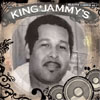 VP Records, the best known reggae label operating in the United States today, has gone above and beyond the call of duty with these four lovingly prepared double-disc collections of King Jammy's legendary 1980s dancehall productions. An extraordinary undertaking, this series branches off from and unequivocally surpasses last year's primer King At The Controls with an unhealthy level of meticulousness.
VP Records, the best known reggae label operating in the United States today, has gone above and beyond the call of duty with these four lovingly prepared double-disc collections of King Jammy's legendary 1980s dancehall productions. An extraordinary undertaking, this series branches off from and unequivocally surpasses last year's primer King At The Controls with an unhealthy level of meticulousness.
America's passing fancy for dancehall reggae has given the public only fleeting glimpses of its overall development, from the boombastic knockouts of Shabba Ranks or Chaka Demus and Pliers to more recent chart-climbers from Sean Paul and Beenie Man. Despite these and other noteworthy popular successes, the genre has thrived and evolved largely underneath the radar of the mainstream, playing independently by its own rules. While dancehall's origins trace back to the Jamaican deejays of the 1970s, one riddim in particular sparked the revolution, changing the face of the genre and reggae music forever: King Jammy's "Sleng Teng."
Although most famously versed by Wayne Smith on the classic "Under Mi Sleng Teng," Lloyd "King Jammy" James' earth-shattering prototypical digital riddim has been employed in studio recordings and live soundclashes by innumerable performers and remains an instantly recognizable dancehall classic with its simple, delightful, and often copied melody. Smith's essential take shares space here with official versions from Tenor Saw, Echo Minnott, Johnny Osbourne, Nicodemus, and John Wayne. While this is a decent and diverse grouping, the number of deejays who've had a go at the "Sleng Teng" riddim is immeasurable, making it downright impossible to put together an authoritative compilation.
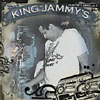 Still, King Jammy wasn't a mere one-hit wonder, as these 159 tracks demonstrate. This four volume series makes for a fantastic historical document of the genre that to this day defines Jamaican music, offering all sorts of clues as to where this emerging sound was headed. It's hard to say from my vantage point whether or not performers in this key period foresaw the longevity the sound would ultimately have, though Jammy's passionate and progressive productions act as a window into this breathtaking stage in 20th century music.
Still, King Jammy wasn't a mere one-hit wonder, as these 159 tracks demonstrate. This four volume series makes for a fantastic historical document of the genre that to this day defines Jamaican music, offering all sorts of clues as to where this emerging sound was headed. It's hard to say from my vantage point whether or not performers in this key period foresaw the longevity the sound would ultimately have, though Jammy's passionate and progressive productions act as a window into this breathtaking stage in 20th century music.
Mining such a sizeable pool of songs from dozens of artists poses a challenge for even the most active listener. Still, even with a splendid, ambitious collection such as this, highlights do emerge. Of particular note is the pairing of Echo Minnott's "What The Hell" and "Tell You What Police Can Do," the female response from Lady Junie, both recorded over the same riddim. Minnott's memorable take practically justifies his abusive relationship, taunting the lover in his story while apologizing for their domestic violence, while Junie's sharp tongue counters with feminist fury, detailing the type of beating her own lover could expect from the authorities for his actions. Peter Metro uses his forum to decry racist profiling and nationalist sentiment on the unforgettable "Police Inna England." On "Let Jah Arise," King Kong infuses some strict Rastafarian morality into the genre, warning sinners who deviate from the righteous path, a torch picked up by more current artists like Capleton. Those who loved last year's White Mice reissues on Basic Replay will enjoy the youthful voice of Risto Benji on the two ruff cuts he graces, "Don't Pirate It"and "Gimme Di Money." Somewhat disappointing on this front is the inexplicable exclusion of the aforementioned Beenie Man, another young emcee that came up through the Jammy's ranks and even recorded his now out-of-print debut album with the imprint.
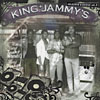 Several of these tracks, most common on the final volume, foreshadow the prevalence of sexual lyrics in dancehall, a significant deviation from the tamer romance of lovers' rock and Jah praise of roots reggae. The genre's early embracing of (hetero-)sexuality sets it miles ahead of the majority of "shocking" lyrics from today's opportunistic Western pop stars and showboating rappers. Compare the allegedly racy singles from major label artists deemed worthy of MTV airplay to some of the raw verses spat and you'll have a hard time disagreeing with my assessment. Take, for one, Jammy's infamous "Punnany" riddim, made even more wicked thanks to the explicit patois of Admiral Bailey's version. To this day, that word serves as an accessible point of reference for dancehall music and, to countless outsiders, Jamaican culture. Shabba Ranks invokes the term repeatedly on the simplistic hook of the raunchy yet catchy "Love Punnany Bad" and to a lesser extent on the even more deliciously vulgar "Needle Eye Pum Pum," a track in praise of gloriously tight pussy.
Several of these tracks, most common on the final volume, foreshadow the prevalence of sexual lyrics in dancehall, a significant deviation from the tamer romance of lovers' rock and Jah praise of roots reggae. The genre's early embracing of (hetero-)sexuality sets it miles ahead of the majority of "shocking" lyrics from today's opportunistic Western pop stars and showboating rappers. Compare the allegedly racy singles from major label artists deemed worthy of MTV airplay to some of the raw verses spat and you'll have a hard time disagreeing with my assessment. Take, for one, Jammy's infamous "Punnany" riddim, made even more wicked thanks to the explicit patois of Admiral Bailey's version. To this day, that word serves as an accessible point of reference for dancehall music and, to countless outsiders, Jamaican culture. Shabba Ranks invokes the term repeatedly on the simplistic hook of the raunchy yet catchy "Love Punnany Bad" and to a lesser extent on the even more deliciously vulgar "Needle Eye Pum Pum," a track in praise of gloriously tight pussy.
Another common thread on display here is dancehall’s informal approach to covering other people’s songs. King Everald's "Dancehall Business" loosely interprets Irving Berlin’s perennial showtune "There's No Business Like Show Business" while Leroy Gibbons' "Magic Moment" stays largely true to The Drifters' original. Coincidentally, Cocoa Tea's "Medley 5" liberally samples from another Drifters classic "Under The Boardwalk." This technique of taking recognizable songs and converting them into new ragga platters continues today.
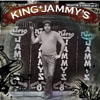 King Jammy's impact on reggae is akin to such hailed producers as Phil Spector or Martin Hannett, if not moreso. A lesser label (several come to mind) would have been content, taking into account licensing considerations, to release any one of these eight discs and audaciously call it "definitive." VP Records' efforts honor the man and his legacy, and I sincerely hope that the label's high profile gives this impressive undertaking the type of attention that could never have been achieved with the independently released Revenge of King Jammy's Super Power All Stars discs. At present, all four excellent volumes are available as individual double-disc releases, which may frustrate cash-strapped consumers but though undoubtedly thrill completists.
King Jammy's impact on reggae is akin to such hailed producers as Phil Spector or Martin Hannett, if not moreso. A lesser label (several come to mind) would have been content, taking into account licensing considerations, to release any one of these eight discs and audaciously call it "definitive." VP Records' efforts honor the man and his legacy, and I sincerely hope that the label's high profile gives this impressive undertaking the type of attention that could never have been achieved with the independently released Revenge of King Jammy's Super Power All Stars discs. At present, all four excellent volumes are available as individual double-disc releases, which may frustrate cash-strapped consumers but though undoubtedly thrill completists.
samples:
- Wayne Smith - Under Mi Sleng Teng
- Peter Metro - Police Inna England
- King Kong - Let Jah Arise
- Echo Minnott - What The Hell
- Leroy Gibbons - Magic Moment
- Shabba Ranks - Needle Eye Pum Pum
- Admiral Bailey - Punnany
- Risto Benji - Gimme Di Money
Read More
- Administrator
- Albums and Singles
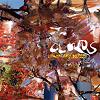 While some of this album is fun, there is not enough fun to go around. Many of the songs are boring, trying to counter a lack of imagination with volume. Listening to this album does get my foot tapping but so do most bar room blues and covers bands. There is nothing to engage with; I am not yearning for anything particularly intellectual but something more than rehashing the same blues scales and vocal histrionics would be nice.
While some of this album is fun, there is not enough fun to go around. Many of the songs are boring, trying to counter a lack of imagination with volume. Listening to this album does get my foot tapping but so do most bar room blues and covers bands. There is nothing to engage with; I am not yearning for anything particularly intellectual but something more than rehashing the same blues scales and vocal histrionics would be nice.
Hydra Head
Two things about this album irritate me and both of them center on Andy McGrath. The first being his overworked guitar playing which, although showing off that he has been practicing his scales, is far from exciting. Luckily it is tempered somewhat by the songs' punkish beats and some nods towards classic Black Flag riffing such as on "Live for it Now." The second thing that irritates me is the vocals as McGrath sounds too cartoonish too much of the time, the most criminal instance being his screaming on "Magic Hater." It's a shame because his vocals sound great on certain parts of certain songs but unfortunately these moments are too rare to redeem him in my ears. One song that bucks all the above trends is "Mountain Jim," which has some great guitar playing on it, coupled with a strong rhythm section. It is not going to set the world ablaze with its originality but it certainly holds its head high above the other songs on Legendary Demo.
Bizarrely, half the disc is taken up with "Quartulli Dub," a very long instrumental jam that quickly becomes an exercise in tedium. As this is such a substantial part of the album, I am surprised that it is so unengaging. The first three minutes are enthralling purely because the music is so different from the rest of the album, instead of the bluesy rock and punk of the preceding songs "Quartulli Dub" is, as the name suggests, far more indebted to reggae and dub. The novelty soon wears off and the self-indulgence becomes too much for me, especially the soulless saxophone solos. If "Quartulli Dub" was a quarter of the length and dropped the saxophone it would be a far better piece of music but at 20 minutes, Clouds are taking the piss.
There are too many pedestrian generic rock songs and far too many moments of excitement to make this album anything less than a chore to listen to. Bearing in mind that some of the best bits are nestled within songs, it is not an option to just program in the tracks I like or rip them to mp3. When it is too much of an effort to listen to a full song to hear the couple of nice guitar licks it contains, it is a sign that perhaps Legendary Demo is not quite as legendary as it makes out.
samples:
Read More
- Administrator
- Albums and Singles
 The three piece improv group return with their second album which is more of the same structureless music that brings to mind John Cage's prepared piano works if they were disarranged for a free jazz ensemble. This album is interesting (in a beard stroking kind of way) but the group does not challenge the listener enough for all its pretenses. The players hold themselves back more often than is necessary; the power of their music is reduced greatly as a result.
The three piece improv group return with their second album which is more of the same structureless music that brings to mind John Cage's prepared piano works if they were disarranged for a free jazz ensemble. This album is interesting (in a beard stroking kind of way) but the group does not challenge the listener enough for all its pretenses. The players hold themselves back more often than is necessary; the power of their music is reduced greatly as a result.
Synaesthesia
The three performers spend as much time not playing as they do making noise. Percussionist Sean Baxter is the most active of the three but gets stuck playing what sounds like the same haphazard beat but on different objects each time. The group utilize two prepared instruments, a piano and a guitar played by Anthony Pateras and David Brown respectively. Apart from the obvious piano and guitar sounds, these two instruments fuse together at times; it is hard to tell what strange sound is coming from which instrument. Both Pateras and Brown play with a lot of restraint and while it is refreshing to hear a group holding back instead of clamoring for the limelight, I wish they would let rip just once or twice to shake things up a bit.
Gauticle requires a lot of patience from the listener as it is not exactly easy listening. The pieces are simply named after the locations where they were recorded, three from Vienna and two from London. The first piece from Vienna sets the mood of the album immediately; it is brooding, atmospheric and sparse. However, it doesn't go far and 11 minutes is a long time to be doing so little. "Vienna Three" is in a similar vein to the first one but with a bit more drama. The percussion is better and the small squalls of guitar feedback provide some much needed texture to the music.
As the disc goes on, the abstract nature of the playing takes its toll. I would have liked something concrete to hold on to but five tracks of atonal noodling is a bit much for me. It is good but something I prefer to take in smaller doses. Sitting down to listen to the album all in one go was a draining experience, taking it track by track allowed me to appreciate it more. I like Gauticle but not too much of it too often. It can be a slog to get through despite most of the pieces being quite good.
samples:
Read More
- Administrator
- Albums and Singles
 Chemism is the "mutual attraction, interpenetration, and neutralisation of independent individuals which unite to form a whole". Strangely though, the collaborations here tend not to come across as collegial, not through any enforcement or dictates by the duo, but through the strength of the chemistry between this collective's core. Black Sun Productions may have gathered a cast of like-minded souls to shape this album, but this still feels like the work is led by the distinctly European vision of the single mind of Massimo and Pierce. In this way, it seems like an ideal description of their working process.
Chemism is the "mutual attraction, interpenetration, and neutralisation of independent individuals which unite to form a whole". Strangely though, the collaborations here tend not to come across as collegial, not through any enforcement or dictates by the duo, but through the strength of the chemistry between this collective's core. Black Sun Productions may have gathered a cast of like-minded souls to shape this album, but this still feels like the work is led by the distinctly European vision of the single mind of Massimo and Pierce. In this way, it seems like an ideal description of their working process.
Moving away from the sombre marathon of their grand The Impossibility of Silence double release, this is an emotionally stricter, more rhythm-led release. The exacting looped beats that most of the tracks here are built up around are aimed more at creating atmospheres than anything to do with tempo or the dancefloor. Through the textures and unsupportive structures of the percussion sounds these appear as integral layers rather than a mere programmed skeletons. Removed from their clanking heavier roots they can either sunk to complex scratchy sputterings ("The Repossession of Innocence Lost"), the bars of hell's gate rattling. This isn't a grand techno epic filling every inch with sound, there is an immense amount of space left on Chemism. These gaps, the cold melodies and the air of ridged melancholy give the album a chilly air that refuses to leave. Even their abstraction feels like its being viewed by carnal eyes through black curtains, the clatter of tin rain on plastic roofs feeling voyeuristic. There’s room for the slightly less serious too, Black Sun Productions never confusing dark music with miserabilism, the simple descending notes taking a brief segway into an huffing orchestral oompah groove.
Their world on Chemism seems to be slowly becoming ruled by a more obviously electronic heart, but a heart nonetheless. The occasional richness of Massimo's vocals only serves to sink the album further into spiritual impiety. His entreaties sink like inverted plainsong, coaxing ravens frm gibbets and young men to their doom. Even the beatific coated vocals soar, as on the closing "Veneration X," they still sound like falling angels clutching fatal wounds. Their previously released paean to William Burroughs, "Uncle Billy," sounds even better in this company than on 7" vinyl, the violin making its mark in the mix. The Coil-like vibraphone melody of "Dies Juvenalis" is the only easily observable link back to their musical roots, the rest of the LP sounding free of heavy or direct influence.
samples:
Read More
- Matthew Amundsen
- Albums and Singles
 Hot on the heels of their highly praised full-length, Deerhunter drops this new set of stunning pop songs. Concise and catchy, these four tracks reveal remarkable development from their previous outing, further strengthening their growing reputation.
Hot on the heels of their highly praised full-length, Deerhunter drops this new set of stunning pop songs. Concise and catchy, these four tracks reveal remarkable development from their previous outing, further strengthening their growing reputation.
Foregoing some of the atmospherics of Cryptograms, the band opts instead for a more stripped-down approach on much of this material. They still launch into some of the explosions that made that album so memorable, but here these sections are tempered with a bit of restraint.
The title track begins with a piano, and then a guitar takes up the melody. With doubled vocals repeating the phrase "patiently, patiently," the song builds to a haunting finale. Organ, drums, and bass drive "Dr. Glass," the mellow pace a nice contrast to the lyrics depicting useless bodies, both living and dead. Similarly, the dreamy bliss of "Like New" masks references to skeletons and the crypt, suggesting darkness beneath the surface of everyday lives. The only song that sounds like it could have come from the full-length is "Wash Off," which channels the high-octane impulses of that album into an ode to the days of being 16. It's an exciting finale to a set that's over all too soon. As a bonus, a mesmeric video for "Strange Lights" is included on the disc.
While still retaining the aspects that made their previous songs so enjoyable, here the group pushes out in new directions equally as captivating, and in the process highlights ever more facets of their accomplished songwriting.
Read More
- Administrator
- Albums and Singles
 I love music that forms images in my mind because the transformation from one medium to the next seems so mysterious to me. That a musician can turn sound into the most vivid photograph ever without defaulting to the ease of field recordings seems a metaphysical conundrum, but some are quite good at it and others are veritable masters of the process. Tim Hecker may be the finest sonic photographer around, the rerelease of Radio Amor being further evidence for this claim.
I love music that forms images in my mind because the transformation from one medium to the next seems so mysterious to me. That a musician can turn sound into the most vivid photograph ever without defaulting to the ease of field recordings seems a metaphysical conundrum, but some are quite good at it and others are veritable masters of the process. Tim Hecker may be the finest sonic photographer around, the rerelease of Radio Amor being further evidence for this claim.
Alien8
Mille Plateaux released Radio Amor in 2002 amid a string of other Hecker recordings. It was not his only 2002 release, but some well-read publications gave it special attention and recognized Hecker's unique approach to sound and music. That recognition led to Radio Amor becoming mostly unavailable, out of print since some time in 2005. Hecker undoubtedly has a larger audience now. His music is becoming more pervasive and more people are looking back from Harmony in Ultraviolet and wondering where all this music came from. The best place to look would be on this album thankfully made available again by Alien8. Hecker's effortless, soporific mannerisms are in tact on Radio Amor but perhaps less refined, still in incubation and developing. Typically such a fact might be taken to speak poorly for a record, as though Mirages and Harmony in Ultraviolet are superior records because they exhibit a more sophisticated attention to detail or highlight a progression from earlier material. Hecker has been making music for a long time, however, and I think his continued growth speaks volumes about his art. Radio Amor may seem more simple, but its emotive depth does not suffer for that fact and, in addition, the chance to hear Hecker playing with more concrete melodies and structures is a lot of fun.
Evidently Radio Amor was composed with the work of a fishing vessel in mind, the body of a man moving about in the rigging and going about his work for the day. I'll have to admit that this was not the first image that came to mind when listening to these songs. I did, however, imagine floating in the air and finding myself lost among the clouds. Hecker's music is so strongly photographic that I have a difficult time describing it in any terms other than visual ones. When the music stutters near the end of "Spectral," I can only think of lightning radiating over the surface of the globe and as "I'm Transmitting Tonight" begins, a sudden plunge into the ocean seems inescapable, the slow motion of traveling underwater the firmest description I can proffer. Objectively, the music on Radio Amor is more concrete, there is a definite sharpness to these songs that I don't feel on Harmony in Ultraviolet and that Mirages had only fleetingly. The sounds move in well-defined blocks, heavy on the ears at times and distinct in memory. It's quite clear that each fragment of sound represents a frame or small series of frames from a much larger movie. When "7000 Miles" plays and the sound of wind and singing sand begins it's as though the entire visual project is being smeared about with impressionistic strokes: it is a stunningly fluid piece on a record that feels tightly structured and constructed from very solid, almost recognizable instruments.
The whole thing ends rather suddenly, but that may have more to do with Hecker's hypnotic powers than with any flaw on the record. After being drawn into the music's warm center, the sudden ejection from that place seems a little cruel and unexpected. "Trade Winds, White Heat," the album's closing piece, is an especially calm and extended moment, a loud and layered mass of easy drone pitched back and forth melodically, the fuzz of a radio signaling its final moments. With the transmission ended the room seems far quieter, tiny sounds are more obvious, and the simple joy of being temporarily motionless hangs in the air.
Samples can be found here.
Read More
- Scott Mckeating
- Albums and Singles
It's probably just as well I wasn't looking for two sides of music from Romero's new project with Shannon Walter, as one side of the disc is a field recording taken from a camping trip. It definitely works on a few levels though, sounding idyllic enough to make me want to get out there in the wide open blue. With birds tweeting happily and the running of distant water, I can at least close the curtains pretend and I'm out there.
The other track is more familiar Romero territory, a dark mire of sinking tones that float down against the notes of other rising lines. It's enjoyably ponderous, rumbling back and forth for the duration of the vinyl. Both disparate cuts are agreeable, but it might've been more interesting to hear a mash-up of both sides.
Read More
- Scott Mckeating
- Sound Bytes
- Administrator
- Albums and Singles
Read More
- Administrator
- Albums and Singles
Tarentel's predominantly instrumental compositions read like chapters of an epic novel – vast and absolutely breathtaking. Tarentel's tidal force and blissful elegance elicit the kind of ecstatic response their name suggests. This album is being released as a series of 4 limited 12" LPs, each between 30 and 40 minutes...The series of 4 LPs comprised of studio and home recordings from September '04 to April '05, Ghetto Beats On The Surface Of The Sun isn't your grandma's Tarentel. It will eat your face, make you shake your ass - ass-shaking trashcan style, but with a healthy dose of psychedelic fever and blast off moon landing thrown in for good measure. Take your medicine!
Read More

